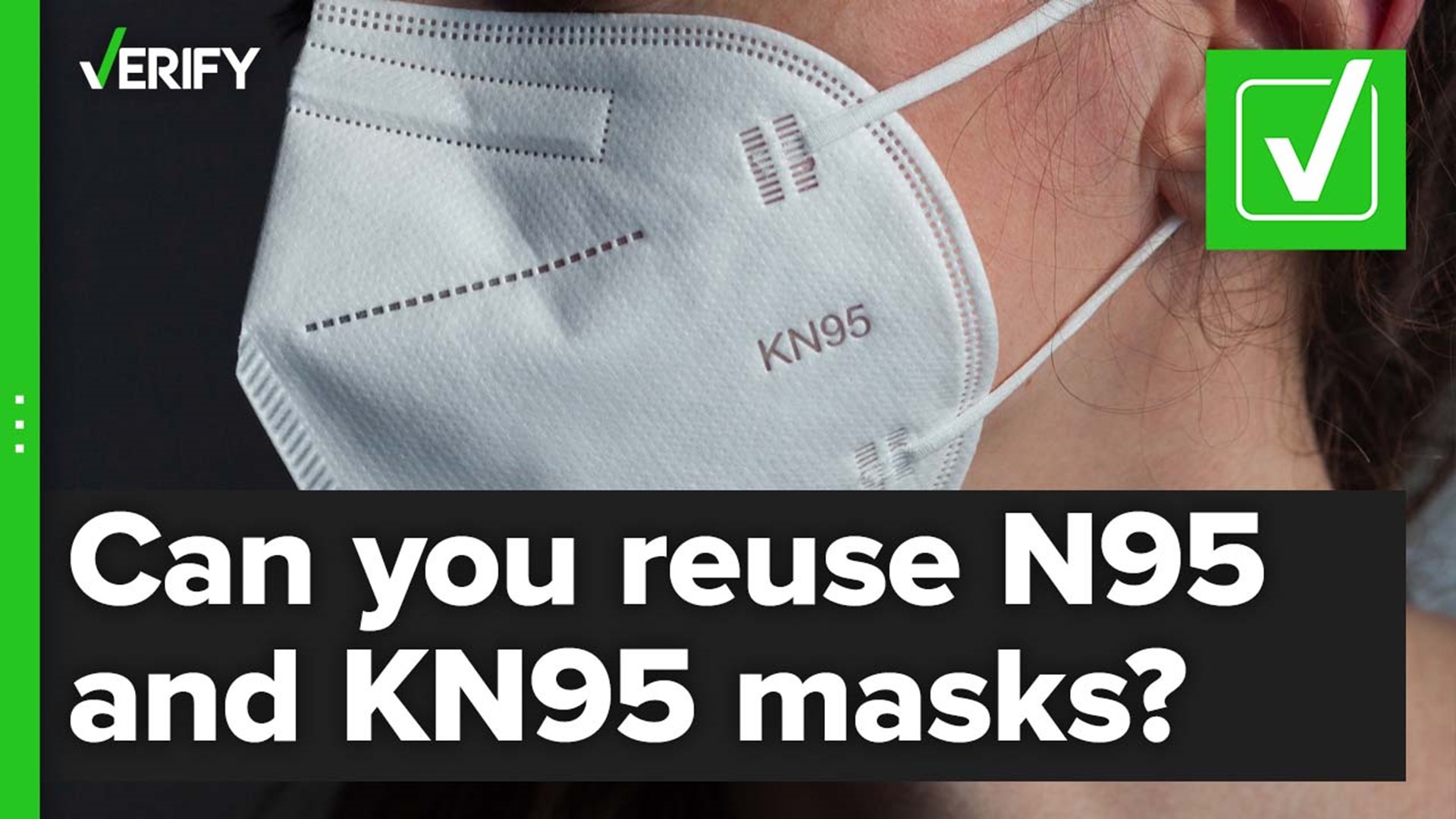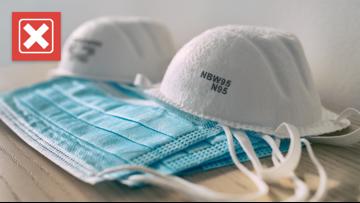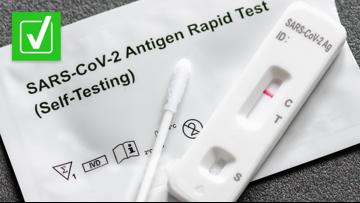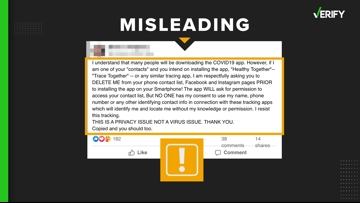The Centers for Disease Control and Prevention (CDC) updated its guidance on Jan. 14, 2022 to clarify that some masks offer more protection than others as the highly transmissible omicron variant of COVID-19 takes hold worldwide.
Well-fitting disposable surgical masks and KN95s offer more protection than cloth masks, the CDC says, and well-fitting respirators approved by the National Institute for Occupational Safety and Health (NIOSH) – including N95s – offer the highest level of protection. The CDC stopped short of recommending one type of mask over another.
But masks with increased protection can cost more and be harder to find. People are now asking whether they can reuse KN95 and N95 masks, including VERIFY viewer Tiffany.
THE QUESTION
Can you reuse KN95 and N95 masks?
THE SOURCES
- The Centers for Disease Control and Prevention (CDC)
- Observational study published by Journal of the American Medical Association (JAMA)
- Nikki Vars McCullough, Global Technical Service and Regulatory Manager for the Personal Safety Division at 3M, a company that manufactures masks
- Instructions for KN95 mask use in schools from Vermont Agency of Education and Department of Public Safety
- Dr. Panagis Galiatsatos, assistant professor of medicine at Johns Hopkins University School of Medicine
THE ANSWER
Yes, you can reuse KN95 and N95 masks several times. Experts say there are steps people should take to keep masks clean between uses.
WHAT WE FOUND
The Centers for Disease Control and Prevention (CDC) recommends on its website that people should wear N95 masks no more than five times. An observational study conducted in an emergency room during the COVID-19 pandemic and published by the Journal of the American Medical Association (JAMA) in June 2020 also showed that it might be possible to wear some models of N95 masks more than five times, the CDC says.
In a document with instructions for wearing KN95 masks in schools, the Vermont Agency of Education and Department of Public Safety say the masks are not washable but should be reusable for an extended period of time with proper care. KN95 masks are an N95 design that have been manufactured and tested overseas rather than the U.S.
Dr. Panagis Galiatsatos, an assistant professor at Johns Hopkins University School of Medicine who specializes in pulmonary and critical care medicine, said the length of time a person can reuse KN95 and N95 masks depends on how they are wearing them. For example, a teacher wearing a mask for an entire day should probably switch it out every week or sooner if it looks dirty, Galiatsatos said.
“If you’re a casual person who needs it to go out somewhere for a few minutes, I would just probably suggest wearing it until you see it soiled or dampened,” Galiatsatos added.
Nikki Vars McCullough, who leads a team of occupational health and safety specialists at 3M, also said that KN95s and N95s can be reused if people take care of them. She recommended that people store the masks in a brown paper bag between uses.
“This will allow the respirator to dry out if it's gotten damp from your breath. It will also keep it clean from any dust that might be around your home,” McCullough said.
McCullough does not recommend storing masks in a Ziploc bag because this could seal in moisture. She added that people shouldn’t shove masks in their pockets or put them in the cup holders of cars.
You should also change out your N95 or KN95 when it gets dirty, McCullough said. If you are seeing dirt on the outside of the mask or makeup or skin oils on the inside, or if the mask is damaged in any way, it’s time to toss it.
Galiatsatos said he would recommend KN95 masks for the general public in non-medical settings because they are more comfortable to wear and often easier to fit than an N95.
If you are using a surgical mask, the Mayo Clinic says it should be replaced daily, or at any sign the mask’s integrity is compromised or when it is visibly soiled or damaged.
It’s also important to clean your hands before putting a mask on, before and after taking it off and after touching your mask at any time, according to the World Health Organization (WHO).
A person can become infected with COVID-19 if they touch their eyes, nose or mouth after touching surfaces contaminated by the virus, but it’s not the primary way the virus spreads.
The primary way that people are infected with COVID-19 is through exposure to respiratory droplets carrying the virus, according to the CDC website. It is possible for people to become infected through contact with contaminated surfaces, “but the risk is generally considered to be low,” the CDC says.
More from VERIFY: Yes, vaccinated people can spread COVID-19 to others












